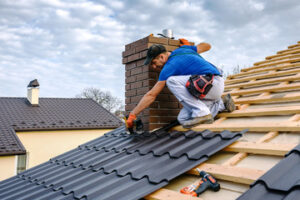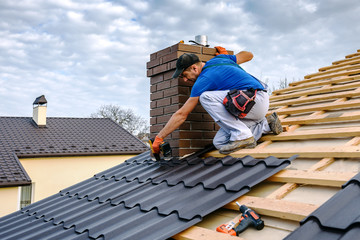A roof is one of the most important parts of your home. It helps protect the interior from harsh weather and can enhance your property’s value.

Before a new roof installation begins, there are many steps to take to make sure the process goes as smoothly as possible. Read on to learn more.
A roof’s underlayment is an important part of the roofing system that protects the roof deck from wind-driven rain and other elements. It also helps to prevent the shingles from curling over the edge and keeps water from leaking into the home.
There are several types of underlayment, including felt paper and synthetics. Both offer different advantages and disadvantages, so it’s important to choose the right one for your home.
The type of underlayment you use depends on your climate and the structure of your roof. If you live in a humid climate, for example, you might want to choose felt paper underlayment. On the other hand, if you live in a cold climate, you might want to choose synthetic underlayment.
Synthetic underlayment is manufactured from woven or spun polyethylene or polypropylene fibers and can be more durable than asphalt-saturated felt. It also provides superior water protection and doesn’t deteriorate like bituminous underlayment.
It’s important to install underlayment correctly to avoid problems. It should be pushed tight into valleys, extending 6 inches beyond the edge of the slope. It should also be pushed tight in side courses, and its overlap should be at least 6 inches.
Underlayment should be attached with either staples or plastic caps in high-wind areas, and it’s generally a good idea to have a metal drip edge fastened along the eaves of your roof. This prevents shingles from curling over the edge and also keeps the fascia boards from getting wet, which could cause mold or other water-related problems.
If you’re installing a new roof, be sure to ask your roofing contractor about the underlayment he or she will be using. Underlayment that is not compatible with the roof-covering material with which it’s installed can accelerate deterioration and possibly even lead to premature failure of the roofing system.
Choosing the right underlayment is important because it can affect your roofing costs, energy bills, and how much time your roof will last. For instance, a poor-quality underlayment can allow moisture to penetrate the underlying roof-covering material and rust it out, causing you to have to replace your entire roof.
Shingles are a popular roofing material for homes because they’re versatile, energy-efficient, and resistant to water. They’re also aesthetically pleasing and can be customized to fit almost any roof shape or angle.
A shingle roof is made up of many layers that overlap to shed rainwater downslope, keeping it from forming an ice dam and leaking back into the home. It also protects against wind and snow and helps prevent rot in the attic.
The type of shingles you choose depends on your needs and budget. You can find a wide variety of types in a range of colors, including lighter or darker shades.
Choosing the right shingle for your home involves several factors, including wind resistance and architectural design. Top-quality shingles often include SureNail technology, which is a heavy strip of woven fabric embedded in the shingle, allowing them to resist winds of 130 mph.
Some shingles have multiple layers that are layered together to create a more seamless appearance. These shingles are also more resistant to fire, wind, and ice.
Once you’ve determined which shingles are best for your home, you’ll need to install them. Some shingles are more difficult to install than others, and it’s important to use a professional roofing contractor for this job.
When installing shingles, be sure to follow the manufacturer’s instructions carefully. This will help ensure you’re getting the most from your new roof.
One of the most common methods of installing shingles is step shingling, where you begin at the ledge and assemble rows of shingles up to the roof line. Then, you offset each row so that the center of one shingle lines up with the edge of the shingles above and below it. This technique allows you to install a complete row of shingles without squeezing the joints too tight and exposing the seams of each shingle.

